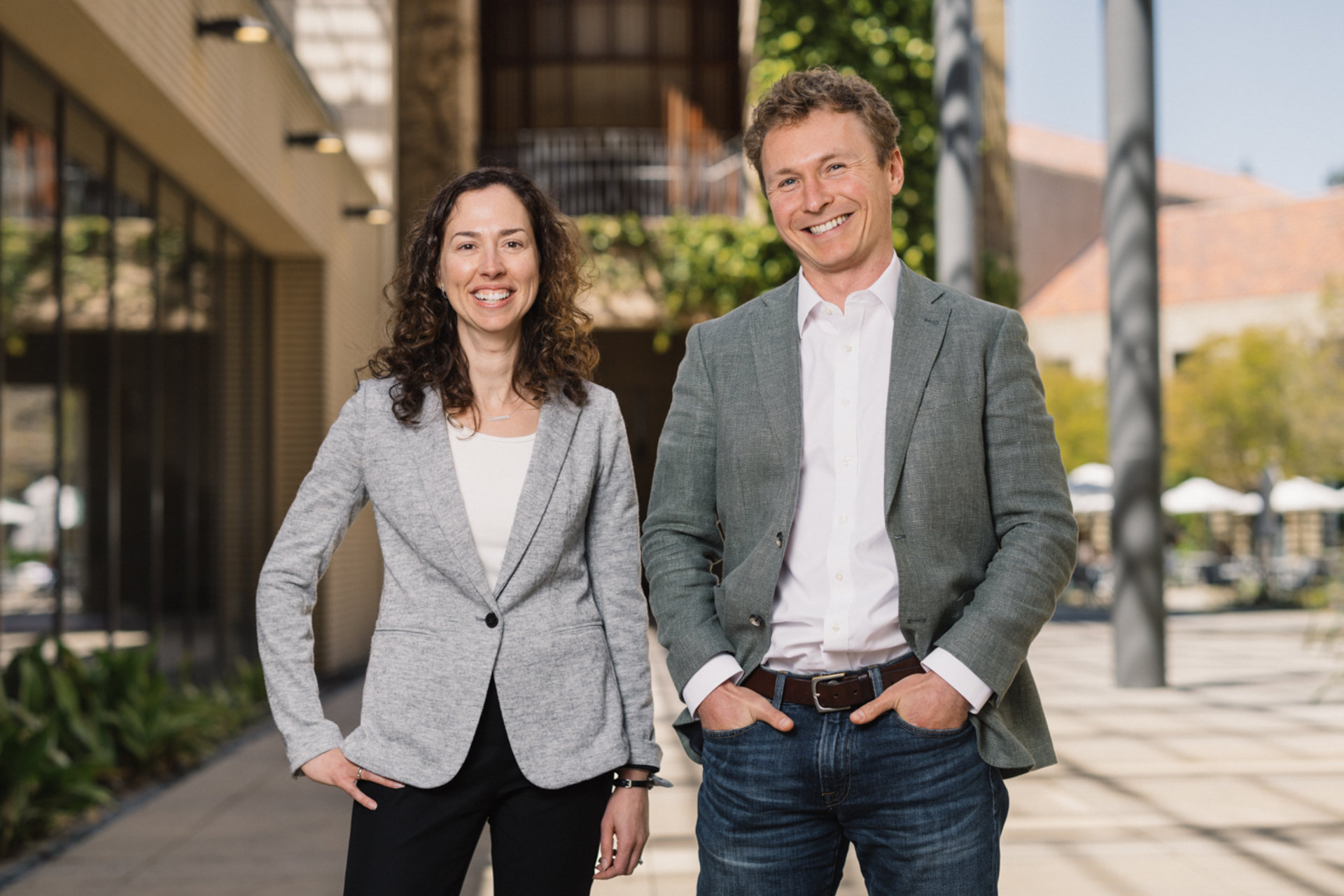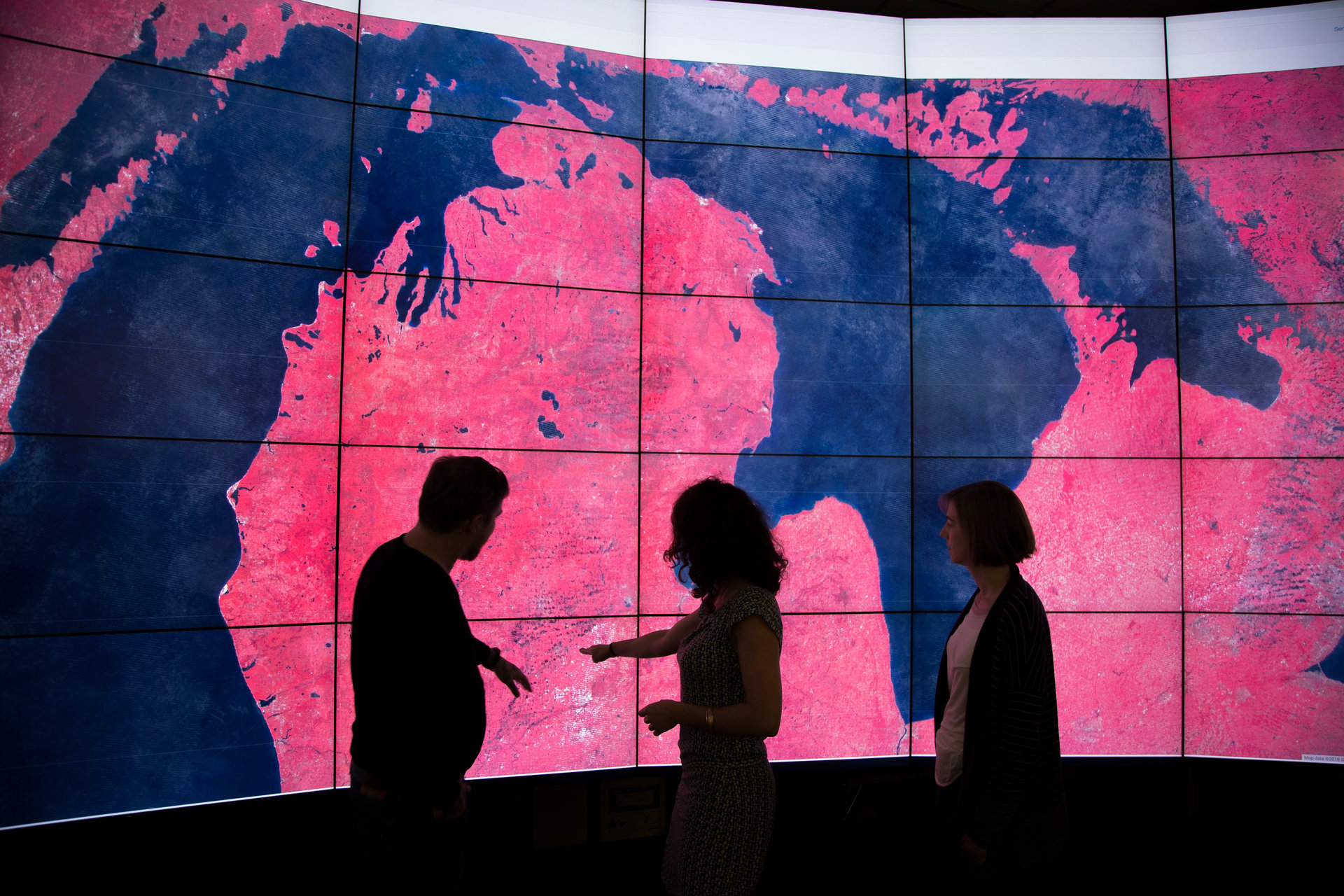New faculty leadership announced for the Doerr School of Sustainability
New Senior Associate Deans and Associate Deans will include a focus on environmental justice; diversity, equity, and inclusion; and more.
Leading up to launching the Stanford Doerr School of Sustainability on Sept. 1, Dean Arun Majumdar has named Senior Associate Deans and Associate Deans whose expertise spans the many areas of scholarship being incorporated into the school. These leaders will serve for three years beginning Sept. 1.
In addition to leadership for Faculty Affairs and Education, the team includes new roles overseeing Integrative Initiatives, which involve efforts in Diversity, Equity, and Inclusion (DEI) and Environmental Justice (EJ), as well as faculty and student initiatives.
“We will be bringing a diversity of approaches and cultures together with the new school – and they are all essential to advancing scholarship and solutions,” said Majumdar, inaugural dean for the school. “Through the work of these thought partners, we hope to lay the foundation for a welcoming, supportive, sustainability community.”
The new appointees include:
- Jonathan Payne, Senior Associate Dean for Faculty Affairs (Geological Sciences, Stanford Woods Institute for the Environment)
- Jack Baker, Associate Dean for Faculty Affairs (Civil & Environmental Engineering, Precourt Institute for Energy)
- Lynn Hildemann, Senior Associate Dean for Education (Civil & Environmental Engineering, Stanford Woods Institute for the Environment)
- Scott Fendorf, Senior Associate Dean for Integrative Initiatives (Earth System Science, Stanford Woods Institute for the Environment)
- Paula Welander, Associate Dean for Integrative Initiatives in DEI (Earth System Science)
- Jenna Davis, Associate Dean for Integrative Initiatives in Institutes and International Partnerships (Civil & Environmental Engineering, Stanford Woods Institute for the Environment)
- Rodolfo Dirzo, Associate Dean for Integrative Initiatives in Environmental Justice (Biology, Stanford Woods Institute for the Environment).
The faculty were selected based on their interest and experience in bringing together best practices from areas coming together within the school, including the School of Earth, Energy & Environmental Sciences (Stanford Earth), the Department of Civil and Environmental Engineering, and the School of Humanities and Sciences. At least one more Senior Associate Dean for Space Planning and Facilities is expected to be appointed in the coming weeks, in addition to department chairs.
Creating an inclusive culture
The Integrative Initiatives leaders are a newly created role intended to ensure the school fosters an intentional culture, woven with inclusive, well-developed community values. Welander, who was recently recognized for her extensive efforts in DEI at Stanford Earth, will be overseeing DEI efforts within the school. Davis will be focusing on integrating across departments, ensuring the institutes are optimally engaged and incorporated in the school, and on international research initiatives and collaborations. Dirzo will be overseeing efforts to promote Environmental Justice scholarship and awareness, and community building.
“The integrated part is really what we’re trying to achieve, and initiatives are some of the vehicles for accomplishing that,” Fendorf said. “I’m hopeful we can foster a healthy and thriving community of people who are really accepting of the interdisciplinarity that we’re going to see within the school.”
Payne, who previously served as Senior Associate Dean for Faculty Affairs with Stanford Earth, will have a greatly expanded role with the school in collaboration with Baker. Payne said he expects the school to launch with over 100 faculty members, with some maintaining appointments very similar to their current arrangements, and others moving portions of their current departmental appointments into the new school.
“We have new units standing up, and many faculty members working together in departments and programs for the first time – it will be a sharp change for all faculty involved,” Payne said. “We’ve been doing a couple years of getting-to-know-you, but now we’re moving in together.”
The ambitious hiring goals of the school – to add about 60 faculty positions over the next 10 years or so – will require a lot of work, excellent communication, and a deep understanding of the institution’s needs. The school’s success will depend on recruiting diverse faculty members who reflect the student body more than they have historically, Payne said.
Along with launching searches and identifying new hires, Payne aims to foster connections with existing faculty in Stanford’s other schools.
“We want knowledge to flow from the school into the other parts of campus and vice versa,” Payne said. “The more people that get involved with this, the more successful we’ll be.”
Hildemann reflected a similar sentiment in terms of the school’s educational objectives.
“My goal is to engage as many students at Stanford as possible with some education about sustainability, and it isn’t just about attracting more majors; it’s really bigger than that,” she said. “I think this is how we’re going to change the world as quickly as we need to – by dispersing all these amazing graduates into the world knowing at least a little bit about sustainability.”
Hildemann’s big-picture thinking will center on how education should look at the school level, including identifying gaps and overlaps, and how to better distinguish between majors from students’ points of view. Efforts will span undergraduate, graduate, postdoctoral, and professional education.
She will also be working to break down silos so that students from different majors have opportunities to connect and collaborate. In addition to social events, the leaders are discussing the possibility of hosting school-level seminars around topics that would attract attendees from across all the range of research areas.
“Even the formation of this group has been a collaborative process,” Hildemann said. “It has all stemmed from identifying the thought leaders who we think are really going to help the school be as successful as quickly and as effectively as it possibly can.”
Hildemann, Fendorf, and Payne, who helped support the formation of the new school in a transitional capacity over the past four years, also recognized the tremendous efforts of the many faculty and staff who helped to prepare the school for its fall 2022 launch.
“We’re highlighting the leadership at this moment, but the school is the product of huge amounts of effort from people over several years, and it’s going to take a lot of work over the next 5 to 10 years to launch it successfully,” Payne said. “None of this happens without the help of our entire community.”
“We are hugely indebted to the whole community, especially the leadership of Kam Moler and Stephan Graham, who have built the momentum and created the foundation over the last 4-5 years. We are building the Doerr School on that strong foundation,” Majumdar said.
Explore More
-
A unique hands-on class teaches Stanford Law School students how to work with early-stage companies that have the potential to move the needle on climate and sustainability.
-
The first group of scholars supported under the new Sustainability Accelerator Fellowship program will focus on the challenge of removing billions of tons of greenhouse gases annually from Earth’s atmosphere by the middle of this century.
-
Scholars from across the university have contributed to a vision for a Sustainable Societies Institute in the Stanford Doerr School of Sustainability that would focus on understanding change in systems where people and nature are inextricably linked – such as cities, food, or global markets.



